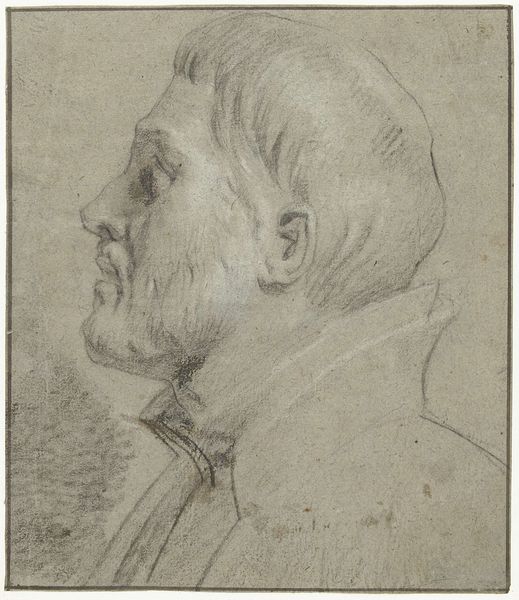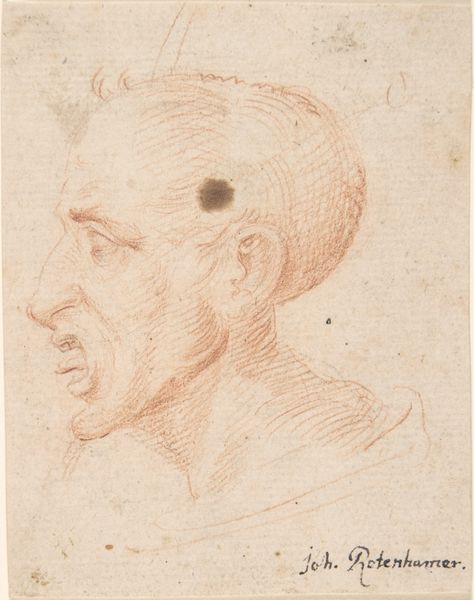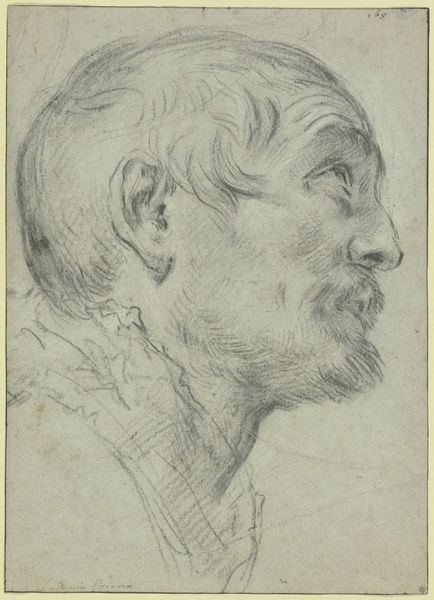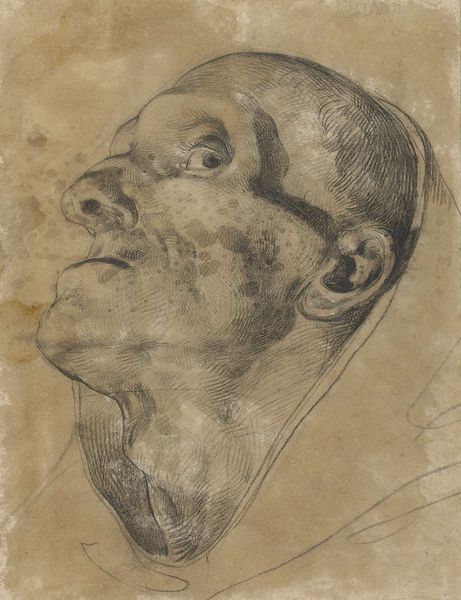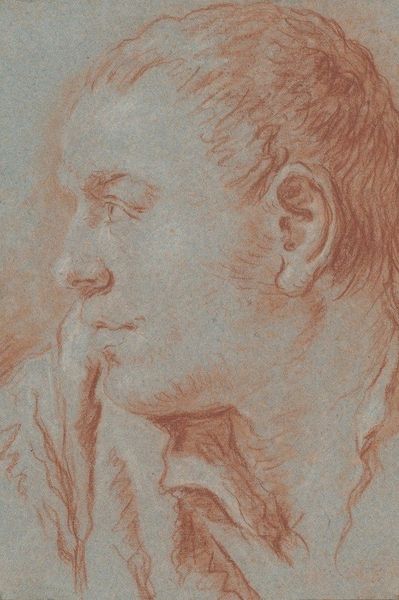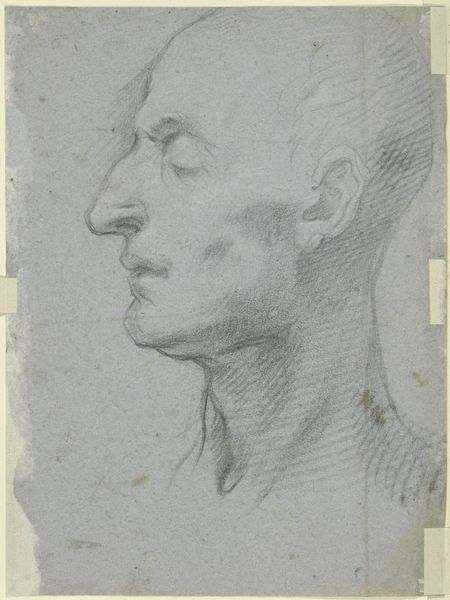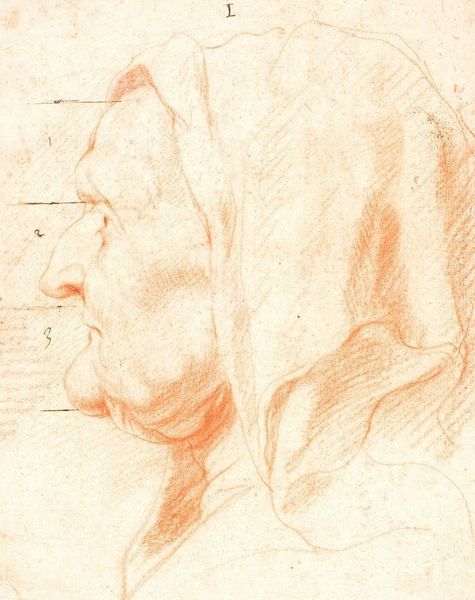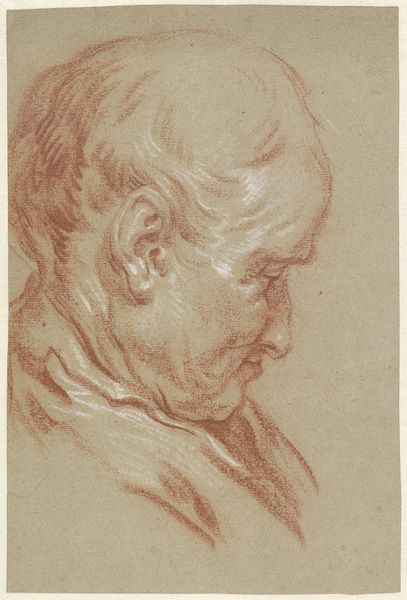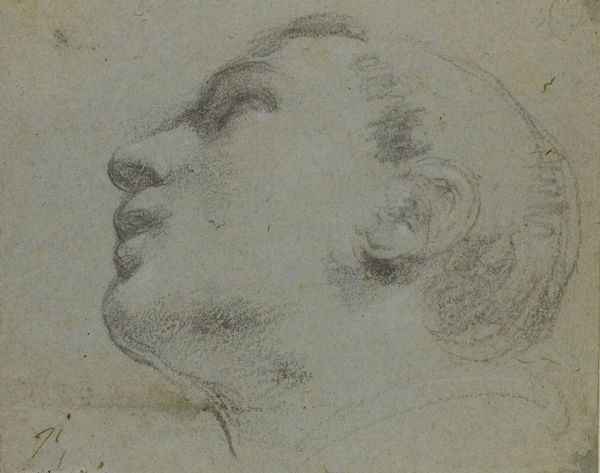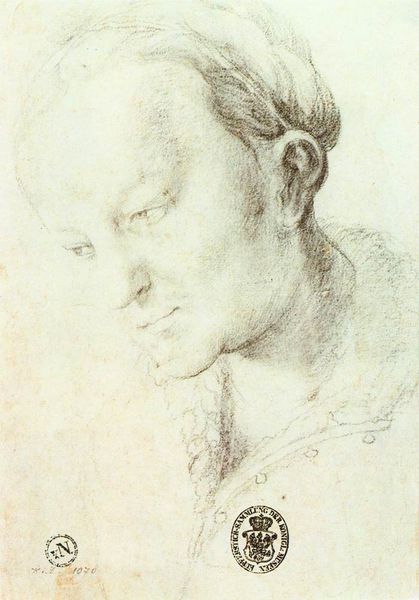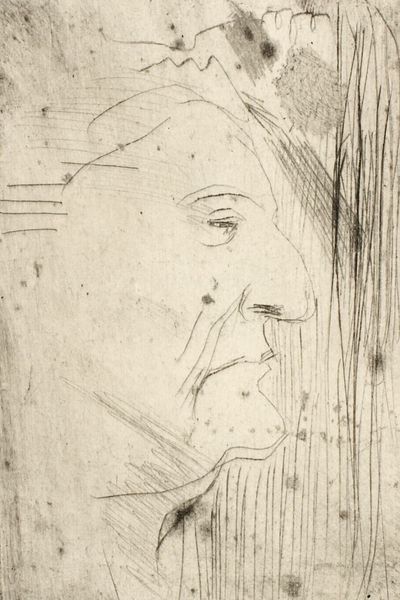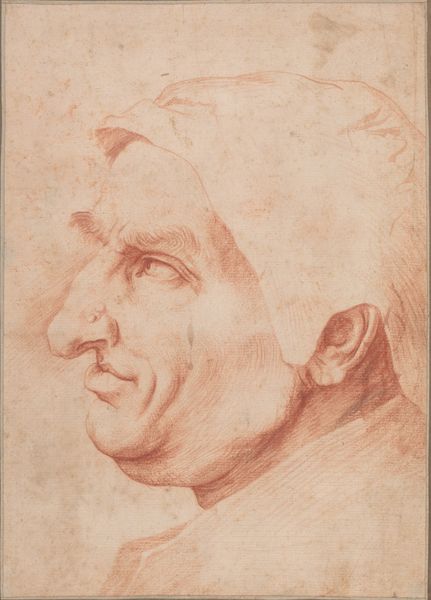
drawing, pencil, charcoal
#
drawing
#
charcoal drawing
#
figuration
#
pencil drawing
#
pencil
#
portrait drawing
#
charcoal
#
academic-art
#
italian-renaissance
Copyright: Public Domain: Artvee
Curator: Take a moment to contemplate this rendering; it's "Head of Saint Francis," a drawing attributed to Guido Reni, made sometime before 1632. The medium appears to be a combination of charcoal and pencil. Editor: My first impression is one of quiet contemplation. There’s something about the downturned gaze and the soft hatching that suggests inner peace or perhaps even resignation. The drawing's simplicity is quite striking. Curator: Indeed. Reni’s drawings often served as preparatory studies for his larger paintings, where we see the manifestation of religious ideals in grand visual narratives. Think about the availability of paper and the specific pencils and charcoals of the period. Each stroke becomes a record of production, directly connected to workshop practices and the socioeconomic realities that underpin artistic creation. Editor: From a formal perspective, observe how Reni uses delicate lines to define the contours of Saint Francis's face. The texture created through varied pressure in the strokes gives depth, hinting at bone structure beneath the skin. The limited color palette focuses the eye and heightens the emotional impact through simplicity. The formal structure communicates pathos so effectively. Curator: Consider who would have had access to drawings such as these, beyond the master's workshop. These sheets offered direct insight into an artist’s process and established status and power for those who owned them. It served as capital. Editor: The subtle modeling of light and shadow across the face also creates an incredibly intimate and tangible portrayal of the saint. I would be very curious about the perspective from which this model was observed. Curator: A fascinating consideration of viewpoint! In contemplating this "Head of Saint Francis," we are not just seeing a representation of holiness, but also touching a history of craft and the economic foundations upon which these images are realized and consumed. Editor: Yes, and seeing how Reni uses line, form, and light to shape our emotional connection to the saint is interesting from a formal perspective as well.
Comments
No comments
Be the first to comment and join the conversation on the ultimate creative platform.
